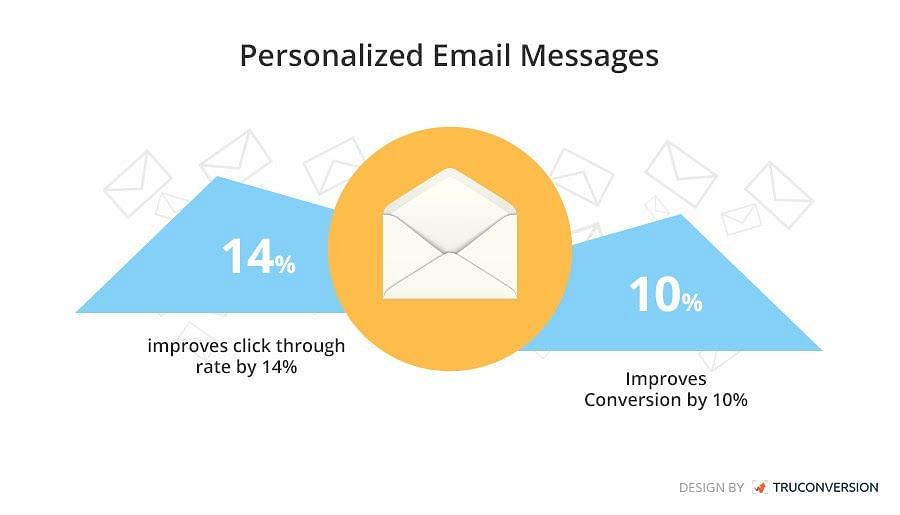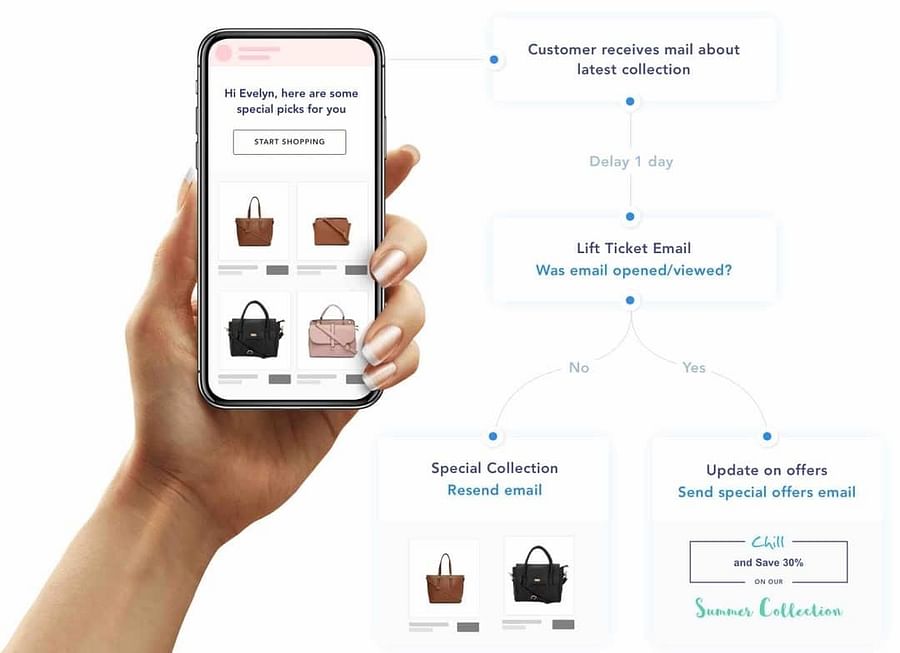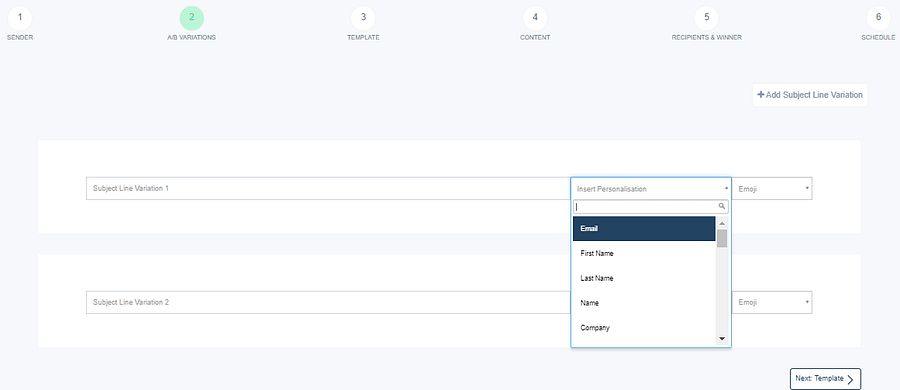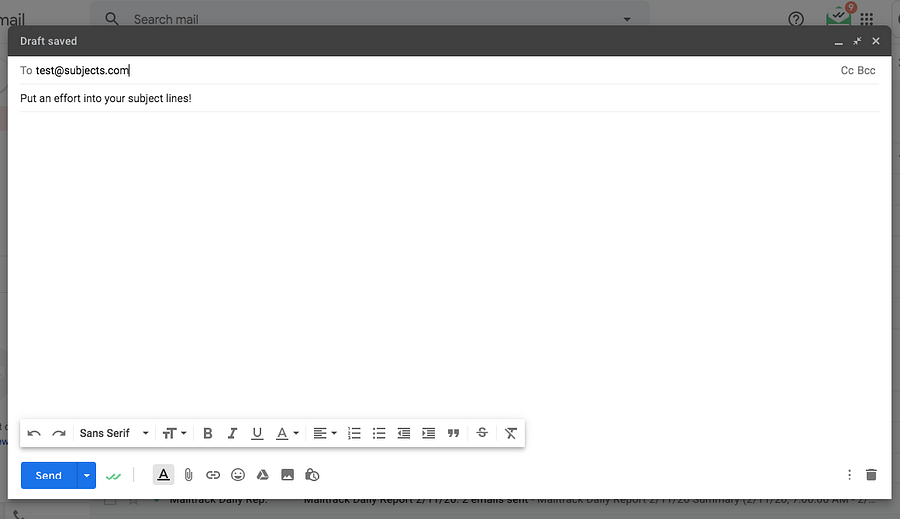7 B2B Email Marketing Practices to Boost your Business
Did you know that, on average, B2B email campaigns have a 47% higher CTR than B2C campaigns? So, if you’ve been waiting for a sign to help you decide whether or not you should use B2B email marketing to boost your business, this might be it.
However, wanting to leverage B2B emails and knowing how to do it are two completely different things. So, what is the trick when it comes to making the most out of B2B email marketing? How can you unlock its full potential and use it to grow your business?
Before we go straight to some useful tips, let’s get one thing out of the way first.
Table of Contents
There Is No Such Thing as Sending One Email
If you decide to go down the B2B email route, remember that one email won’t make a whole lot of difference. Why? Because a B2B recipient will never buy anything on an impulse.
So, either get ready to start sending a lot of emails manually or be prepared to spend some time looking into an outreach automation tool or an email marketing tool—if you want to do this right.
Why so many emails, though? Because in B2B campaigns, your content needs to educate people and provide value to them, and you can’t do that in a short span of time.
As we mentioned earlier, you need to convince your potential customers that your product is “worth it” and the only (and best) way to do so is through a long-term, event-driven campaign.
So, if you go in expecting great results after only one email, then be prepared to be sorely disappointed.
Now, let’s talk about what you can do to get the most out of B2B email marketing and successfully scale-up your business.
B2B Email Campaign Best Practices to Help You Boost Your Business
#1 Personalize Your Emails
There’s probably nothing more important in the world of B2B email marketing than personalizing your emails. People expect high levels of personalization these days because no one wants to bother with generic emails that treat them as faceless nobodies.
In fact, according to Aberdeen, “Personalized email messages improve CTRs by an average of 14% and conversions by 10%”.

However, while personalizing an email can help you gain the attention of people reading them and boost engagement levels, you need to remember that “being personal” goes beyond the standard “Hi [INSERT NAME HERE]”.
You need to actually make an effort to get to know the person you’re writing to, learn about their business, and create an email based on all the information you have.
A piece of great advice is to collect personal details while you’re building your email list because that way you won’t have to go back and do it from scratch once you’re deep in your email marketing efforts.
There are a number of tools that can help you gather the details you need (one such would be a LinkedIn emails extractor which allows you to get thousands of targeted contacts and even automate your work), but sometimes you can even go beyond that and dig a bit deeper on your own.
Naturally, this doesn’t mean that you should get too friendly with the person you’re trying to reach. You want to make it look like you’re familiar with what they do, but still, keep it professional. To stay on the same page with your prospects, consider a LinkedIn automation tool to send hyper-personalized connection messages on autopilot while scraping their emails.
#2 Automate Your Campaigns
With automated emails getting 119% higher click rates than broadcast emails, does it really come as a surprise that the majority of brands nowadays rely on email automation? It really shouldn’t.

Not only does automation save you a lot of time (if you think about how many emails you need to send for your efforts to pay off), but it also allows you to target the right people, at the right time, with the exact message that you want.
For example, by automating your email campaigns, you can make sure that every new subscriber receives a welcome email because we all know how much first impressions matter.
You can also send activation emails to your users to encourage them to use your product or personalized announcement emails to keep them up-to-date with what’s happening with your business.
There is a large number of email service providers out there that you can use to automate your campaigns, with SendX being one of the best ones. It offers both audience segmentation and basic analytics features, plus it’s extremely affordable and easy to get started with.
Of course, there are plenty of great alternatives available, too, so don’t hesitate to look into them (a lot of them offer free trials!) and see if maybe one of them works for you.
#3 Segment Your Audiences
Before you get involved with B2B email campaigns, think about how you can better segment your audience. Will you do it by industry, job title, or location? The more you segment, the easier it will be for you to personalize your emails and make your message relevant.
Plus, it doesn’t hurt to know that open rates are 31% higher in segmented rather than non-segmented campaigns, CTRs 100.95% higher, and the number of people who unsubscribe 9.37% lower.
Keep in mind that there’s a fine line between segmenting just enough and segmenting too much. If you get in too deep with segmenting, it might make your campaigns too complex and often difficult to manage.
Depending on the size of your target audience and the type of campaign you have in plan, 6-8 segments might be just the ideal solution.
Additional tip: Segmenting helps you save time by allowing you to create a template which you can afterward personalize using the details you collected when building your email list.
#4 A/B Test Your Email Campaigns
One of the pillars of every marketing effort is testing, testing, and more testing. After all, the goal is to make the best possible strategy there is, right? And this requires you to experiment as much as you can with your emails (or your content or ads), to see what works for your business and what doesn’t.
When it comes to email campaigns, you can A/B test anything from your subjects to completely different templates. You can personalize your emails more or you can end less personal emails to see what your users like better.

A/B testing can also help you find out which of your emails are going to spam and which are not. Ultimately, what you decide to test out is up to you, but the more you experiment, the more success you’ll have with your email marketing campaigns.
#5 Make Your Subjects a Priority
David Ogilvy once said: “On average, five times as many people read the headline as they read the body copy. When you have written your headline, you have spent eighty cents out of your dollar.” The same goes for your email subject lines—especially when it comes to B2B email marketing.

The key to get B2B leads to open your email lies precisely in the subject line. If you really put in an effort (create really great subjects), you will get to enjoy open rates of 90% or higher.
According to research, subject lines that contain words such as “money”, “revenue”, and “profit” (words that present different business benefits) usually perform best among B2B readers, whereas words such as “help”, “free”, and “reminder” don’t perform all that well.
Our advice? A/B test your subjects frequently and keep them as clear, precise, and concise as possible.
#6 Be Consistent with Your Emails
Sending emails too often is considered to be spammy nowadays. Sending them infrequently will result in your leads becoming disinterested and never becoming your users and/or customers.
So, when you embark on your B2B email marketing adventure, make sure to figure out how often you should be sending out emails, as this can have a huge impact on your success rates.

According to DMA UK, 18% of B2B brands send emails once per month, compared to B2C brands which send at least 5 emails on a monthly basis. However, this doesn’t mean that you’re limited to one email per month, just that you don’t overdo it. According to the same research, B2B companies should send up to 5 emails per month.
A great way to figure out the consistency is to check what your competitors are doing, and then test it out yourself. You can send less or more than them, and see how that works out. So, if your engagement rates are low when you send out 6 emails per month, lower that number, and vice versa. Basically, adjust your frequency accordingly once the first metrics roll in.
The most important thing to remember is that no matter how many emails you send, you want them to be as informational and educational as possible, and not just sales-y, as a bunch of emails usually are.
#7 Reuse Your Best Content
At one point or another, you’ll probably run out of content ideas for emails. You’ll have a deadline for an email and you simply won’t know what to send to the people on your list. However, instead of just skipping out on sending an email altogether and risking losing the interest of your leads/users, you can repurpose some of your best content.
Creating a curated list is a great way to do just that! You can go into your analytics and find e.g. which blog posts ranked the highest over the past 6 months or so, and then put them together as one big list. Link to the posts straight from the email (you can link the titles, for example), write a short summary of each post beneath the title, add an image perhaps, and you’re good to go.
By sending out such a list, you will not only keep your subscribers engaged even when you’re out of fresh ideas, but also provide them with useful information. You can further encourage them to read the posts by saying that you updated the content with the latest information that they’ll appreciate.
Final Thoughts
If you take into consideration that 86% of professionals prefer to use email when communicating for business purposes, then you’ll realize that B2B email marketing is, without a doubt, your best bet when it comes to nurturing and generating B2B leads.
Of course, these aren’t the only tips and B2B email campaign best practices that you can use in order to scale up with email marketing, but what’s important is to test everything out, optimize, and test some more in order to see how you can achieve the best possible results for your business.
FAQs
1) What is the importance of personalization of emails in B2B email marketing?
People expect high levels of personalization these days because no one wants to bother with generic emails that treat them as faceless nobodies. In fact, according to Aberdeen, “Personalized email messages improve CTRs by an average of 14% and conversions by 10%”.
2) What are the benefits of automating b2b email campaigns?
Automation saves you a lot of time (if you think about how many emails you need to send for your efforts to pay off), and it also allows you to target the right people, at the right time, with the exact message that you want.
For example, by automating your email campaigns, you can make sure that every new subscriber receives a welcome email because we all know how much first impressions matter.
3) What are some benefits of A/B testing?
When it comes to email campaigns, you can A/B test anything from your subjects to completely different templates. You can personalize your emails more or you can end less personal emails to see what your users like better. A/B testing can also help you find out which of your emails are going to spam and which are not.
4) How can I go about reusing my best content in b2b email marketing?
Creating a curated list is a great way. You can go into your analytics and find e.g. which blog posts ranked the highest over the past 6 months or so, and then put them together as one big list. Link to the posts straight from the email (you can link the titles, for example), write a short summary of each post beneath the title, add an image perhaps, and you’re good to go.


